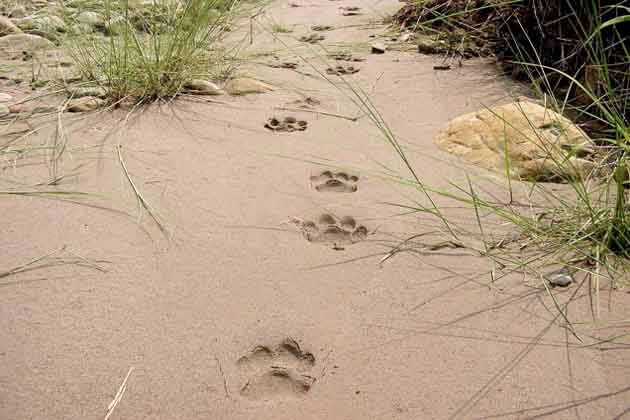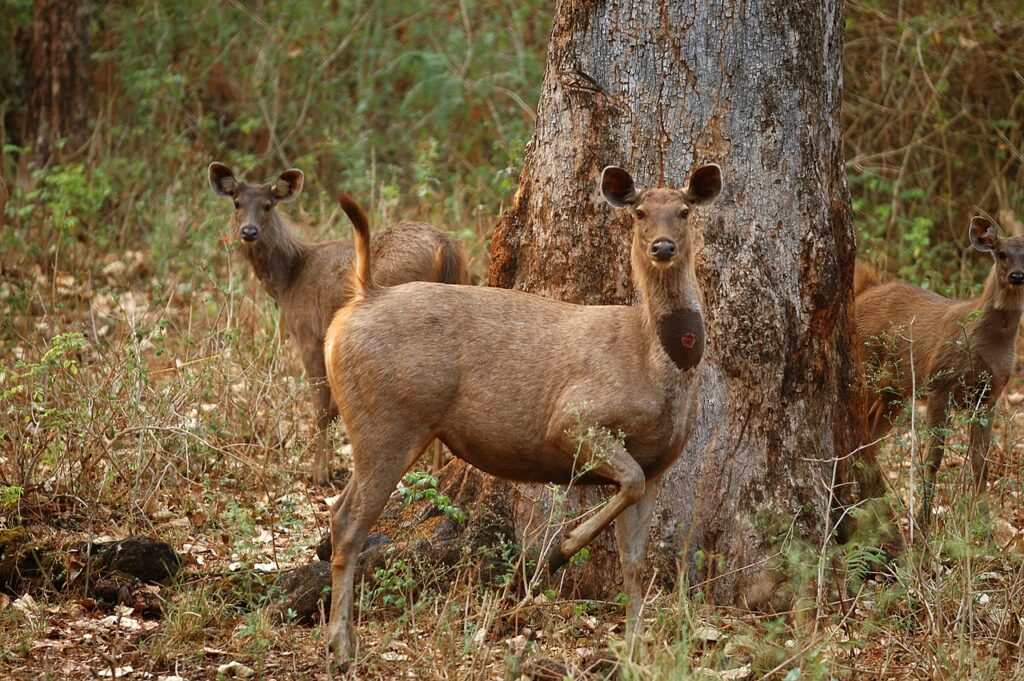Welcome, fellow nature enthusiasts, to the enchanting jungles of Central India! My name is Sahil, and as an eco tour operator and taxi service provider in this biodiverse region, I am thrilled to guide you on your first adventure into the realm of tiger reserves. In this blog, we’ll delve into the art of tracking tigers and discovering the diverse wildlife that calls these forests home.
Tracking tigers is an exhilarating experience that requires patience, keen observation skills, and a deep understanding of the jungle’s nuances. Here are some tips for first-time tiger reserve visitors on how to track these magnificent creatures:
- Footprints and Pugmarks: One of the most common methods of tracking tigers is by following their footprints, known as pugmarks. These distinctive prints can often be found along jungle paths, riverbanks, or muddy patches. Keep an eye out for fresh prints and follow them cautiously to increase your chances of spotting a tiger.

2. Scratch Marks and Scat: Tigers often leave behind scratch marks on trees or large rocks to mark their territory. Additionally, their droppings, or scat, can provide valuable insights into their presence and recent movements. Be on the lookout for these signs while exploring the jungle.

3. Alarm Calls: The calls of other animals, such as langurs, deer, or birds, can indicate the presence of a tiger nearby. These alarm calls are a natural warning system used by prey animals to alert others of potential danger. Pay attention to these vocalizations and follow them to potentially spot a tiger.

4. Fresh Kills and Scent Markings: Tigers often make fresh kills or leave behind scent markings to communicate with other tigers in the area. Keep an eye out for signs of recent hunting activity or distinctive scent markings, such as urine sprayed on trees.
While the tiger may be the star attraction of Central India’s jungles, there is a wealth of other wildlife waiting to be discovered. Here are some fascinating creatures you may encounter during your visit:
- Leopard: The elusive leopard is another apex predator found in these forests. Known for their stealth and agility, leopards are skilled hunters that often stalk their prey from the treetops. Keep an eye out for their distinctive rosette-patterned coat while exploring the jungle.
- Sloth Bear: The sloth bear is a unique species known for its shaggy coat and distinctive white V-shaped mark on its chest. These solitary creatures are primarily nocturnal and feed primarily on insects, fruits, and honey. While they may appear slow-moving, sloth bears can be surprisingly agile when threatened.
- Snakes: Central India is home to a variety of snake species, including the majestic king cobra, the venomous Russell’s viper, and the graceful Indian rock python. While encountering snakes can be a thrilling experience, it is essential to maintain a safe distance and respect their space.
- Birds: The jungles of Central India are a haven for birdwatchers, with over 300 species of birds calling these forests home. From majestic raptors like the crested serpent eagle to colorful songbirds like the Indian roller, birdwatching enthusiasts will be treated to a dazzling display of avian diversity.
As you embark on your first tiger reserve adventure, remember to approach the jungle with reverence and respect for its inhabitants. By honing your tracking skills and immersing yourself in the wonders of wildlife diversity, you’ll create memories that will last a lifetime. So pack your binoculars, lace up your hiking boots, and get ready for an unforgettable journey into the heart of Central India’s jungles. Happy exploring!




